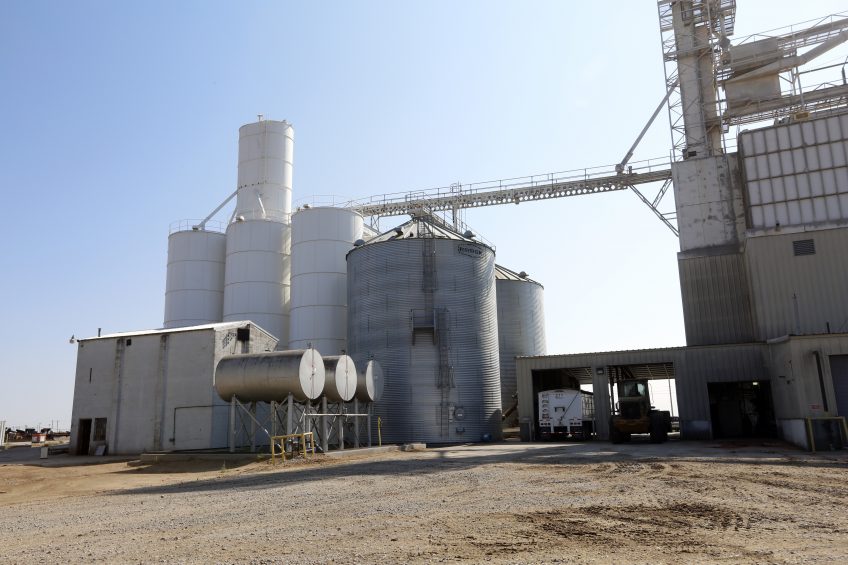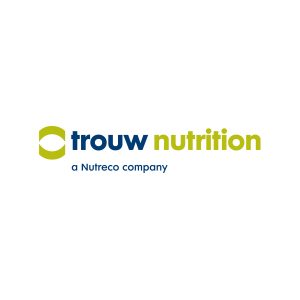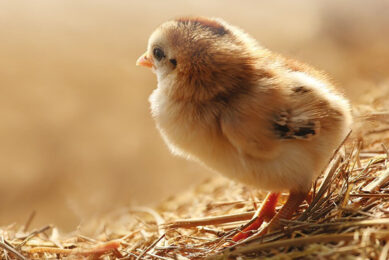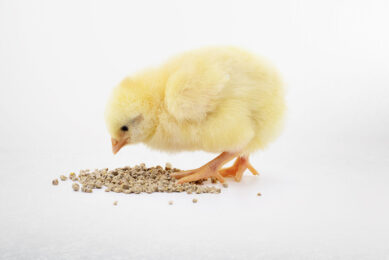Safer Salmonella control in poultry feed

Salmonella in feed is one of the key causes of colonisation in poultry. Enterobacteriaceae such as Salmonella can be present in the entire feed production process, from the raw materials all the way through to the final feed. Salmonella may then be passed on to consumers. Because of this, feed millers and integrators aiming to ensure high feed quality standards, need to demonstrate they have an effective Salmonella control programme.
Controlling Salmonella at the beginning of the chain, in raw materials and feed, reduces prevalence from the very start. The practical example in this article shows how a Salmonella audit can support feed millers to take the most appropriate steps. It also demonstrates how a strict control programme, involving a combination of feed additives, regular expert checks and interventions, leads to effective results without any need for aggressive treatments such as the use of formaldehyde.
A safe solution for high-calcium feeds
A Dutch feed miller was looking into alternatives to formaldehyde in order to control Enterobacteriaceae in its feed for layers (including eggs for vaccine production) and breeders. These types of feed are not pelletised and contain a relatively large amount of calcium. The combination of these characteristics makes it difficult to decontaminate the feed effectively.
Figure 1 – Enterobacteriaceae count (log CFU/g) per treatment. Fysal 0% is untreated and Fysal 0.5%, 0.75% and 1.0% indicate inclusion level of Selko Fysal. t: time in days.

A high calcium level neutralises many acids used and without pelletising the feed is not heated, both of which prevent decontamination. This was why the feed miller employed formaldehyde, which is an aggressive decontamination product. As there are safety concerns with the use of this product, this feed miller wanted to try using a gentler method based on organic acids. The feed mill had set the quality standard at a level of less than 10³ cfu Enterobacteriaceae per gram of feed. In addition, they wished to have an automatic dosing system to add the feed additives to the feed.
Initial assessment
Firstly, feed samples were taken for a dose-response study in order to find the optimum dosage level to reach the quality goal in the most economical way. The baseline results showed that the Enterobacteriaceae level was very high in both the untreated and the formaldehyde-treated samples. Only a very high dosage of the organic acids could reduce this to the desired level (Figure 1). A decision was taken to investigate the production system more thoroughly to solve the problem.
A full Salmonella audit was performed in the entire production system. Samples were taken in several places, including from spots where dust normally collects, like sieves. Scrapings from the inside of machines were also taken, since these locations are at risk of Enterobacteriaceae contamination. Finally, samples of the raw materials were taken to measure their microbial quality, both before and after grinding. The results revealed that the inside of the grinder was high in Enterobacteriaceae, with levels of up to 24,000 cfu/g. However, the ground wheat used for the feed had even higher levels, up to 110,000 cfu/g. These findings showed that the high Enterobacteriaceae level in the feed was mainly due to the contamination of the wheat after grinding.
Integrated approach
Based on these findings, a new plan to manage the Enterobacteriaceae level was proposed. Since there were multiple sources of contamination, an integrated approach was applied in which feed additives with specific modes of action were used to treat specific areas. As shown in figure 2, the raw material, left-overs in the system and the final feed were treated.
Figure 2 – Schematic representation of the production line. The stars indicate high levels of Enterobacteriaceae. The arrows show the points at which Selko Fysal feed additives are introduced. Raw material intake (1), inside the grinder (2), bunker pre-mixer (3), cleaning sieve (4), loading sieve (5), end product (6), and vacuum cleaner (7).

The complete feed safety programme used to prevent the high Enterobacteriaceae counts for this feed mill included; Adding a feed additive (Selko Fysal liquid) based on organic acids to high-risk raw materials (whole grains) at 0.4% inclusion, spraying the grinder once a week with another feed additive (Selko Fysal SP) using a powder duster, in order to reduce the bacterial level in the feed left-overs and adding a third feed additive (Selko Fysal Feed) to the feed in the mixer at 0.5% inclusion rate, to prevent later contamination with Enterobacteriaceae.
The high level of active ingredients in the used additives assured efficacy despite of the high buffer capacity of the feed, giving the organic acids combination in the formula the chance to reduce the level of Enterobacteriaceae. This combined solution proved to be more cost-effective due to the lower inclusion rate necessary and this still helped the feed miller to reach the goal of less than 10³ CFU Enterobacteriaceae without the use of formaldehyde.
The key to such a successful and safe Enterobacteriaceae (including Salmonella) control programme involves finding out where the risks are located and having the expertise and correct equipment to apply the most effective products in the right places. The best results can be achieved when dosage advice is based on studies with the raw materials used on site, because bacterial load and raw material conditions differ from place to place. By testing the effects of several different dosage levels, it is possible to define the most economical dosage for optimal results.
Author: Danielle Smeitink, Trouw Nutrition






